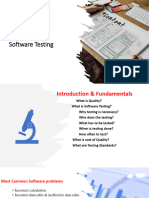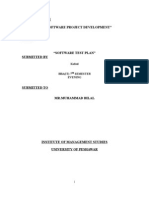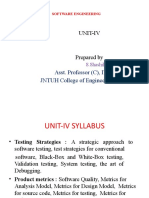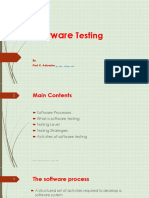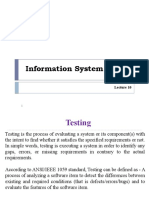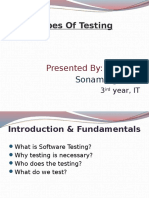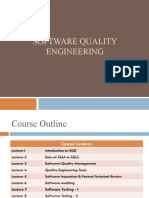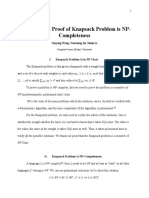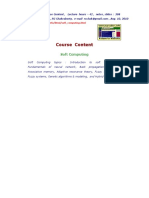0% found this document useful (0 votes)
10 views19 pagesLecture Notes - Software Eng UNIT 5
The lecture notes cover software testing methods and strategies, emphasizing the importance of testing in the software development lifecycle to identify and rectify errors early. Key concepts include verification and validation, types of testing such as alpha, beta, black-box, and white-box testing, as well as the software testing strategy involving unit, integration, and system testing. The notes also highlight the differences between black-box and white-box testing in terms of knowledge requirements and applicability levels.
Uploaded by
kwadwoglorious1Copyright
© © All Rights Reserved
We take content rights seriously. If you suspect this is your content, claim it here.
Available Formats
Download as PPTX, PDF, TXT or read online on Scribd
0% found this document useful (0 votes)
10 views19 pagesLecture Notes - Software Eng UNIT 5
The lecture notes cover software testing methods and strategies, emphasizing the importance of testing in the software development lifecycle to identify and rectify errors early. Key concepts include verification and validation, types of testing such as alpha, beta, black-box, and white-box testing, as well as the software testing strategy involving unit, integration, and system testing. The notes also highlight the differences between black-box and white-box testing in terms of knowledge requirements and applicability levels.
Uploaded by
kwadwoglorious1Copyright
© © All Rights Reserved
We take content rights seriously. If you suspect this is your content, claim it here.
Available Formats
Download as PPTX, PDF, TXT or read online on Scribd
/ 19




